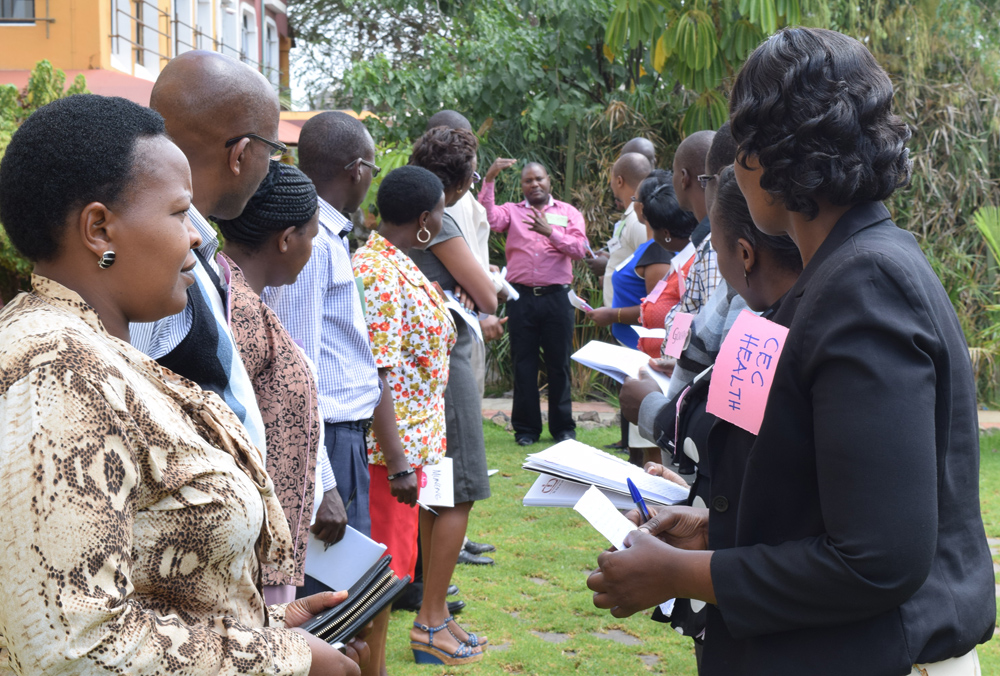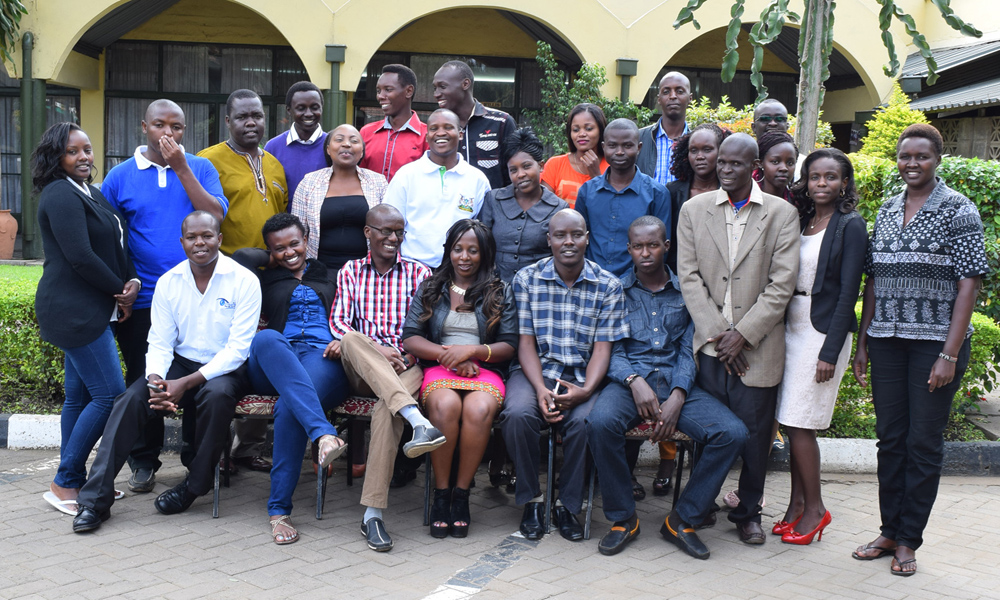Transforming Media Reporting of Nutrition Issues in Kenya
Titus Mung’ou
The face of nutrition advocacy in Kenya has taken a new turn in the recent months, thanks to sustained efforts by the Scaling Up Nutrition Civil Society Alliance (SUN CSA) to build capacity of media practitioners to report nutrition stories. The establishment of a network for journalists reporting nutrition stories and increased media coverage of nutrition programmes, are just but a few achievements realised since June 2015.
 By Titus Mung’ou
By Titus Mung’ouTitus Mung’ou is the Advocacy and Communications Manager at Action Against Hunger (ACF) and Chair of Kenya’s Scaling Up Nutrition Civil Society (SUN CSA).
The face of nutrition advocacy in Kenya has taken a new turn in the recent months, thanks to sustained efforts by the Scaling Up Nutrition Civil Society Alliance (SUN CSA) to build capacity of media practitioners to report nutrition stories. The establishment of a network for journalists reporting nutrition stories and increased media coverage of nutrition programmes, are just but a few achievements realised since June 2015.
A media visibility study commissioned by SUN CSA and conducted by a media monitoring firm Reelforge Limited, revealed depth and challenges of nutrition reporting by the media between May 2014 and May 2015. A key finding in the report was that: “Media coverage on nutrition related issue was highest on radio medium in terms of frequency during the period. This can be attributed to the high count of outlets/ channels on this medium. Television had the highest share of advertising value equivalents despite a lower count of (nutrition) stories compared to other media types.”
Informed by previous media workshops and the media monitoring report, SUN CSA through support from the Population Reference Bureau (PRB) and individual members, conducted national and county level media trainings, targeting journalists specialising in science reporting.
A national media workshop conducted by SUN CSA in February 2015 brought together 9 journalists and 3 Community Health Workers (CHWs) from Nairobi and Embu counties. The journalists were drawn from the Nation Media Group, Kenya Broadcasting Corporation, Standard Group, Science Africa and freelancers.
Topics covered included introduction to SUN Movement, Kenya’s nutrition landscape, nutrition policy framework and nutrition as a media agenda. The facilitators were drawn from SUN CSA and Media for Environment, Science, Health and Agriculture (MESHA). A similar training was conducted by SUN CSA in May 2015 in Nakuru County and benefited more than 20 journalists from counties supported by the network to implement SUN Multi-partner Platform Trust Fund and Population Reference Bureau projects. The counties are Baringo, Kajiado, Machakos, West Pokot, Taita Taveta and Wajir.
It was in this workshop that a network for journalists reporting nutrition stories was formed and a taskforce put in place to develop strategies for recruitment of more members and expansion of the network to other counties.
Below are key recommendations from media workshops conducted by SUN CSA:
- Mobilisation of funds for research and fieldwork logistics to enable journalists to write quality stories.
- Establishment of a nutrition database accessible to journalists.
- Building the capacity of journalists to cover nutrition case studies and surveys.
- Establishment of social media accounts to enhance sharing of nutrition news.
- Initiation of a competition on for journalists reporting nutrition stories.
- Sensitisation of media editors on nutrition issues, so as to increase its coverage.
- Support to journalists to cover nutrition activities in the field.
Country Situation
Malnutrition is a significant public health problem in Kenya. It is estimated that 26% of Kenyan children are stunted (below adequate height for age).
Consequently, Kenya was identified in the 2013 Lancet series on under nutrition as one of the 36 countries that carry 90 percent of the global burden of stunting. Malnutrition in children is particularly damaging since the effects are irreversible, resulting in permanent impairment of cognitive function and impacting on the quality of life and productivity of an individual, and as a consequence the national economy.
Regrettably, Kenya’s progress in reducing under nutrition has been very slow, at an average annual rate of 0.6–2.5 percent.
As a follow of the two media workshops, SUN CSA with support from PRB conducted a media editors’ workshop in Nairobi on 19th June 2015. More than 30 media personnel, among them editors and senior journalists attended the event. Kenya’s SUN Government Focal Point and Head of Nutrition, Gladys Mugambi and West Pokot County Senator John Lonyangapuo, were among the leaders and policy makers, who addressed the meeting.
The workshop came hot on the heels of the Kenya Demographic Health Survey (KDHS) report of 2014 which revealed that 26 percent of children under 5 were stunted, while wasting was at 4 percent and children too thin for their age (underweight) at 11 percent.
While acknowledging the challenges facing nutrition sector, Ms Mugambi was upbeat: “Kenya deserves a pat on the back for meeting the Millennium Development Goals Target for underweight children which stands at 11 percent.”
She called on various stakeholders and the media to join hands with the government in promotion nutrition awareness.
“The media has a big role to play in nutrition campaigns. We all know that media advertisement influences the choice of foods in the household.” – Gladys Mugambi, Head of Nutrition and SUN Government Focal Point
Recommendations to improve media coverage of nutrition programmes:
- Nutrition actors should push for more coverage by radio stations to help address the malnutrition situation in the country. There is need to improve reporting of nutrition issues by regional radio stations especially in areas most affected by malnutrition such as West Pokot and Turkana counties.
- Increase efforts to use other media channels such as television and print.
- Research findings on nutrition issues attract high media interest and coverage. Nutrition actors should support or partner with research firms to conduct nutrition surveys and inform the public the malnutrition trends in the country.
- Address the gap in media coverage of malnutrition cases in rural areas where the problem is most prevalent.
At least 15 journalists trained by SUN CSA in May 2015, have been supported to travel to the field and cover nutrition programmes in Baringo, Kajiado, Machakos and West Pokot counties. The immediate results are: a positive impact on the quality of nutrition stories in the media and enhanced visibility of nutrition issues.

